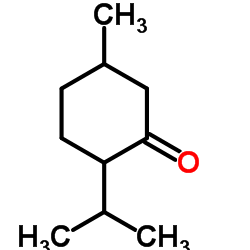| 结构式 | 名称/CAS号 | 全部文献 |
|---|---|---|
 |
薄荷酮
CAS:10458-14-7 |
|
 |
2,3-已二酮
CAS:3848-24-6 |
| 结构式 | 名称/CAS号 | 全部文献 |
|---|---|---|
 |
薄荷酮
CAS:10458-14-7 |
|
 |
2,3-已二酮
CAS:3848-24-6 |